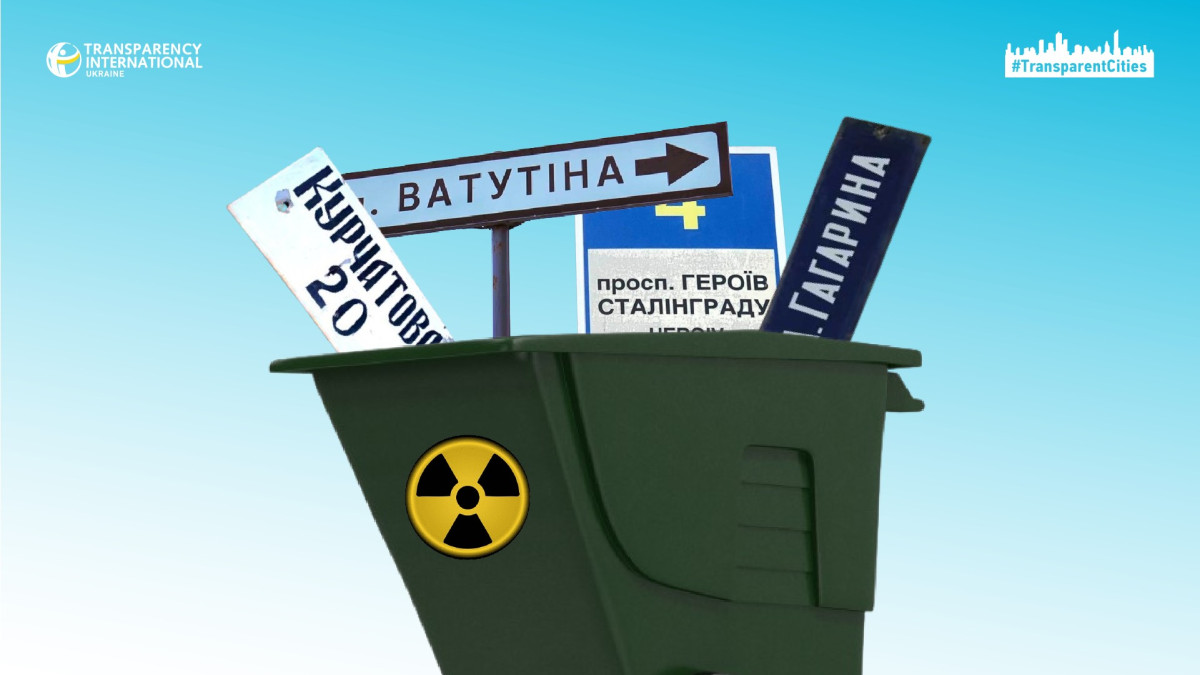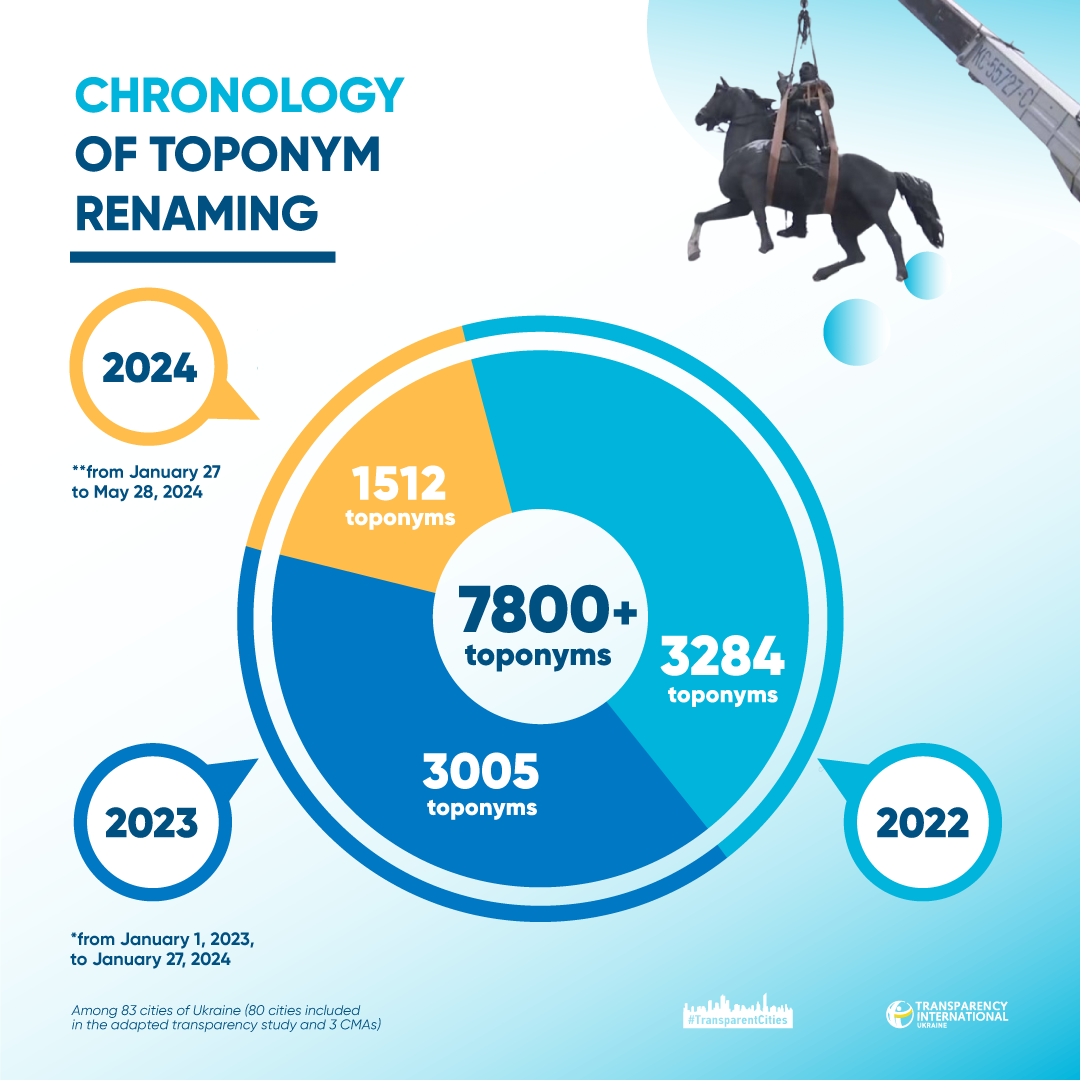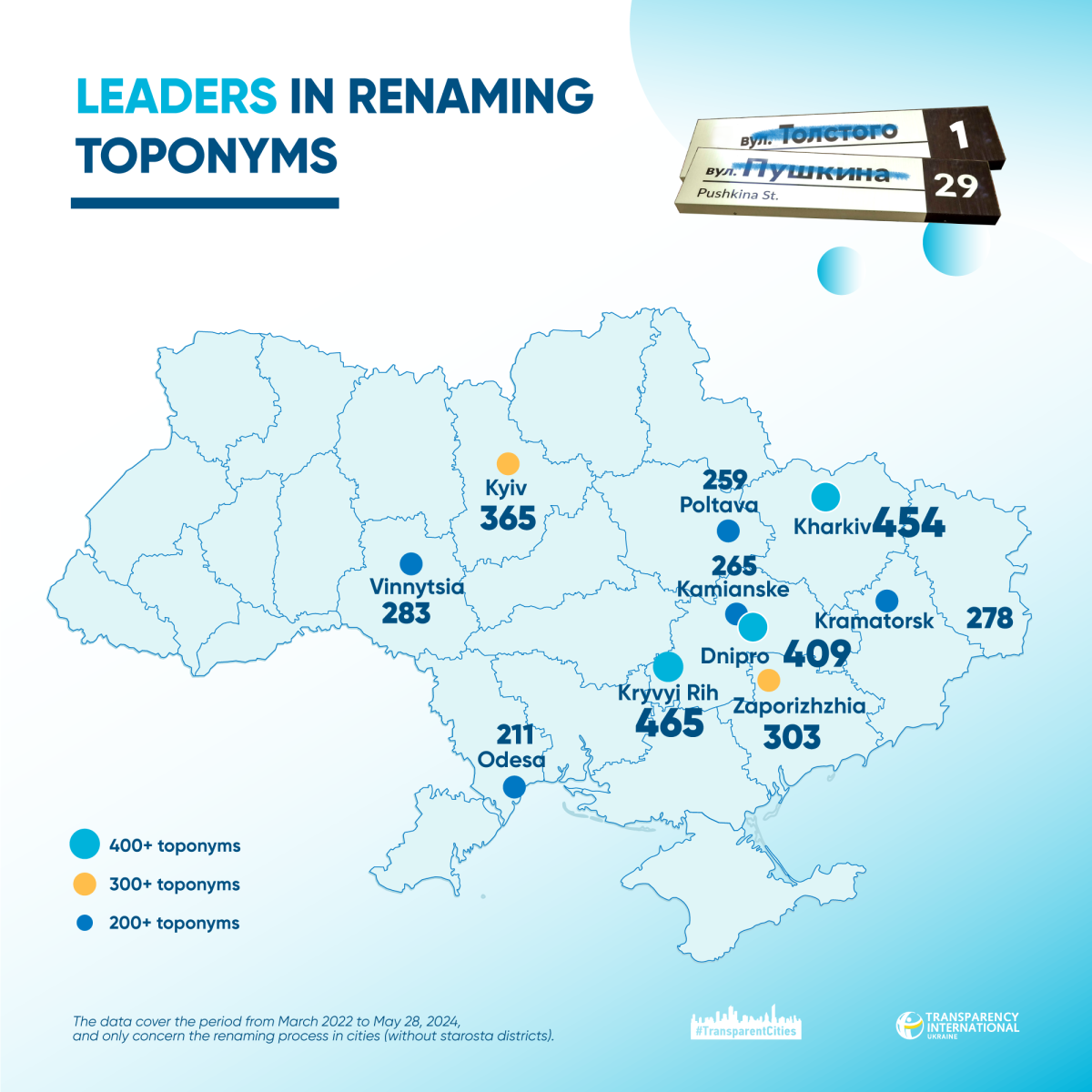

For two years, not only numerous monuments to Lenin and Zhukov have been actively disappearing from the maps of Ukrainian cities, but also all possible markers of imperial culture. The new decolonization law gave cities until the end of April to rename streets, parks, stops, and other toponyms.
The Transparent Cities program studied the decolonization of toponyms in 83 cities of 23 regions of Ukraine between March 2022 and May 28, 2024.
The analysis covered 80 cities of the adapted study of city transparency and 3 city military administrations (Pokrovsk, Kramatorsk, and Kherson), whose experiences had been studied in previous years, to find out how different cities complied with the derussification requirement. Some municipalities were actively changing the names; others delayed the process until the last days.
The Transparent Cities program studied the decolonization of toponyms in 83 cities of 23 regions of Ukraine between March 2022 and May 28, 2024.
How many toponyms have been renamed?
7,800 toponyms were renamed starting from March 2023 to May 2024 in 83 cities under study. These include 80 participants of the adapted study of city transparency and three more front-line municipalities—Pokrovsk, Kramatorsk, and Kherson.
The highest number of toponyms was renamed in 2022, namely 3,284, which is 42% of the total number of names changed. In 2023, the cities were less active—about 3,000 toponyms. However, this does not mean that the decolonization process has slowed down. Most imperial markers were removed in the first year of the full-scale invasion, and it took time to develop new lists of names.
From late January to mid-May 2024, Ukrainian cities renamed more than 1,500 toponyms, which is almost half of the figure for 2023. The local authorities must have worked in turbo mode to fulfill the requirements of the law on decolonization, which entered into force in July 2023. Before that, the renaming of all Russia-related toponyms had actually been voluntary.
The highest number of toponyms was renamed in 2022, namely 3,284, which is 42% of the total number of names changed.
Derussification leaders
Derussification leaders include such cities as Kharkiv, Kryvyi Rih, Dnipro, Kyiv, Zaporizhzhia, Vinnytsia, Kramatorsk, Kamianske, Poltava, and Odesa.
However, such statistics do not mean that these cities carried out quality decolonization while others did not. Some city councils, for example, in the west of the country, now show insignificant figures because they launched this process back at the time when Ukraine’s independence was restored in 1991. Vinnytsia, Drohobych, Dunaivtsi, Mukachevo, Ternopil, and Khmelnytskyi declare that they have already completed derussification.
Quantity does not mean quality. In Kyiv, citizens were given only 5 days to choose new names for 237 streets in the Kyiv Digital application. Since the number of toponyms was indeed considerable for such a limited time, the most popular were the first names on the lists.
Notably, Kyiv, Vinnytsia, Sumy, Kramatorsk, and Kremenchuk are the leaders in terms of voluntary renaming. As soon as the relevant legislation came into force, other cities joined. The leaders of the “mandatory” derussification were Kharkiv, Dnipro, Kryvyi Rih, Zaporizhzhia, and the Pokrovsk City Military Administration.
Photo: ME Kyiv Metro
Some cities tried to catch up with decolonization as best as they could. According to the law, if the city council fails to rename toponyms, the mayor can issue an order for another three months. Kharkiv tried to do everything in the last few days: on April 26, mayor Ihor Terekhov renamed 387 toponyms by one order. Pavlohrad and Odesa showed a similar approach.
Certain municipalities stalled decolonization, deliberately or not. In Zhmerynka, a year passed between surveying citizens and renaming, although by law, consultations cannot last more than a month. In Mykolaiv, the process got rolling only this spring; allegedly, there was no quorum at almost every second meeting of the commission.
Photo: Yaroslav Khramov
Vinnytsia, Drohobych, Dunaivtsi, Mukachevo, Ternopil, and Khmelnytskyi declare that they have already completed derussification.
What will happen next?
Derussification continues, as at least 650 toponyms in different cities of Ukraine are subject to renaming. By the end of July 2024, the decision on renaming may be adopted by the heads of regional military administrations (currently, military administrations). City councils continue the process because, despite the new law, they still have the authority to do so.
In any case, the toponyms associated with Russia or its imperial heritage will be renamed, not by the RMAs but by local self-governments. The most important thing is not to stall this process and finally remove markers of Russian identity from our space.
In any case, the toponyms associated with Russia or its imperial heritage will be renamed, not by the RMAs but by local self-governments.










